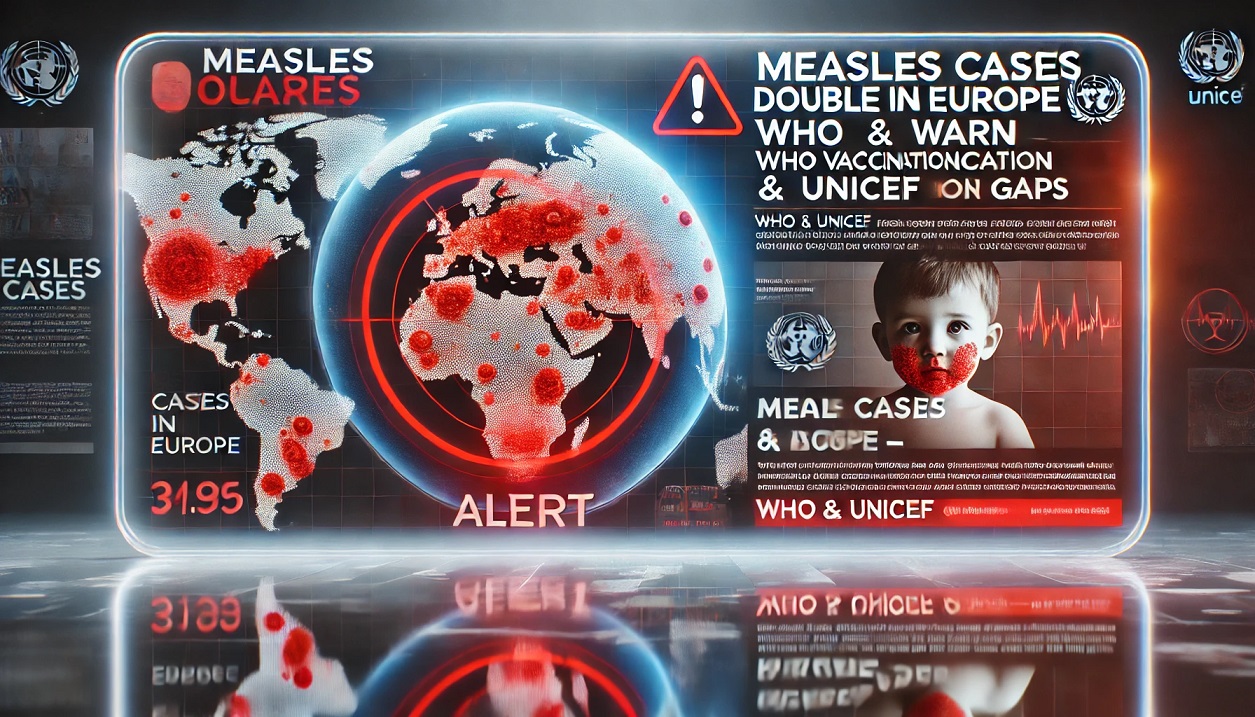🔴 BREAKING: The U.S. is experiencing its highest tuberculosis (TB) cases in over a decade, with over 10,300 infections reported in 2024. 📈 Learn why TB is surging, the most affected states, and what health officials are doing to curb the outbreak. 🏥 Read now!
The United States is facing an alarming surge in tuberculosis (TB) cases, with reports showing the highest levels in more than a decade. According to the latest data, TB infections have increased by 8% in 2024, reaching over 10,300 reported cases. This surge has raised concerns among health officials, particularly due to increased global travel, migration, and a rise in immune-compromising conditions that trigger dormant infections.
In this article, we will explore the reasons behind the rise, affected regions, potential health risks, and preventive measures while providing a detailed insight into how TB spreads and why this resurgence demands immediate action.
Key Highlights
✔ TB Cases Hit Record High – The highest numbers since 2011, with over 10,300 new cases reported in 2024.
✔ States Most Affected – 34 states saw a rise, with Alaska and Hawaii reporting the highest infection rates.
✔ Major Cause: Migration & Travel – A significant portion of cases were found among non-U.S.-born individuals, highlighting global movement as a factor.
✔ Community Outbreaks – Places like Kansas City saw a staggering 148% increase in TB cases.
✔ Vulnerable Populations at Risk – Individuals with weakened immune systems, diabetes, and HIV are at a greater risk of developing active TB.
✔ Government & WHO Intervention – CDC and public health agencies are ramping up screening, vaccination, and awareness campaigns to prevent further spread.
What is Tuberculosis (TB)?
Tuberculosis (TB) is an infectious disease caused by Mycobacterium tuberculosis, primarily affecting the lungs but capable of spreading to other organs. It is transmitted through the airborne droplets released when an infected person coughs, sneezes, or speaks.
While many infected individuals do not develop symptoms immediately, TB can remain latent in the body for years before becoming active.
Why Are TB Cases Rising in the U.S.?
🔹 Increased International Travel & Migration
- Many new cases have been detected in individuals who recently traveled or migrated to the U.S.
- Certain countries have higher TB prevalence, leading to imported cases.
🔹 Weakening Immune Systems
- People with HIV, diabetes, cancer, or other chronic illnesses are more vulnerable.
- COVID-19 aftermath has weakened immunity in some individuals, allowing latent TB to reactivate.
🔹 Delays in TB Screening & Treatment
- Post-pandemic disruptions have led to delays in TB screenings, allowing cases to spread unnoticed.
- Lack of awareness and misconceptions prevent early diagnosis.
🔹 Rising Homelessness & Poor Living Conditions
- TB spreads faster in crowded spaces, making homeless shelters, prisons, and refugee camps hotspots for outbreaks.
- Lack of access to healthcare increases undiagnosed and untreated cases.
States With the Highest TB Cases
📍 Alaska – Most affected state, recording a significant rise in TB rates.
📍 Hawaii – Second highest TB rate, attributed to population density and global visitors.
📍 California, New York, Texas, Florida – Home to large international populations and major transit hubs, making them hotspots for TB spread.
📍 Kansas City Outbreak – 148% increase in cases, making it a major concern for health officials.
Health Risks & Symptoms of TB
🔸 Symptoms of Active TB:
✅ Persistent cough (lasting 3+ weeks)
✅ Chest pain & difficulty breathing
✅ Unexplained weight loss
✅ Fatigue & night sweats
✅ Fever & chills
🔸 Latent vs. Active TB
- Latent TB – No symptoms, not contagious but can become active if immunity weakens.
- Active TB – Causes symptoms, highly contagious, requires immediate treatment.
Benefits of Early TB Detection & Treatment
✅ Preventing the Spread – Early treatment reduces transmission and controls outbreaks.
✅ Curing the Infection – TB is treatable with a combination of antibiotics taken for 6–9 months.
✅ Protecting Vulnerable Individuals – Early intervention safeguards high-risk populations like elderly individuals and immunocompromised patients.
✅ Avoiding Drug-Resistant TB – Late or incomplete treatment can lead to multi-drug-resistant TB (MDR-TB), which is harder to cure.
Challenges & Drawbacks of TB Treatment
❌ Long Treatment Duration – Patients need to take multiple antibiotics for months, leading to non-compliance issues.
❌ Drug Resistance Concerns – If treatment is stopped early, TB becomes resistant to common antibiotics, making it deadlier.
❌ Limited Vaccine Effectiveness – The BCG vaccine, widely used, is not 100% effective in adults and is mainly given to children in high-risk countries.
❌ Healthcare Barriers – Many individuals, especially migrants or uninsured people, struggle to access timely diagnosis and treatment.
Government & WHO Actions to Combat TB
🚨 CDC Initiatives – The CDC has increased funding for TB screenings and awareness programs in the most affected states.
🚨 WHO's Global TB Eradication Plan – The World Health Organization (WHO) is pushing for improved vaccines, rapid diagnostics, and accessible treatment.
🚨 New TB Medications in Development – Researchers are working on shorter and more effective treatments to reduce drug resistance.
🚨 Increased Surveillance in Airports & Migration Centers – To curb imported cases, authorities are enhancing health screenings for international travelers.
How Can You Protect Yourself From TB?
🔹 Get Tested – If you have symptoms or belong to a high-risk group, get a TB skin or blood test.
🔹 Wear a Mask in High-Risk Areas – Healthcare settings, shelters, and crowded places increase exposure risk.
🔹 Complete the Full Treatment – If diagnosed, finish the entire TB medication course to prevent drug resistance.
🔹 Strengthen Your Immune System – Eat healthy, exercise, and manage chronic conditions like diabetes or HIV.
Conclusion
The resurgence of TB in the U.S. is a serious public health concern, demanding immediate action from both authorities and individuals. While the disease is treatable, early detection and prevention are crucial to curbing the outbreak. The government, healthcare agencies, and the public must work together to reduce TB transmission, ensure timely diagnosis, and prevent future outbreaks.
With growing cases in 34 states and major outbreaks in urban centers, it is critical to raise awareness and take preventive steps to control this ancient yet still-dangerous disease.
Disclaimer:
⚠️ Medical Disclaimer: This article is for informational purposes only and does not substitute professional medical advice. If you experience TB symptoms or need medical consultation, please contact a healthcare provider immediately.

















Comments 0